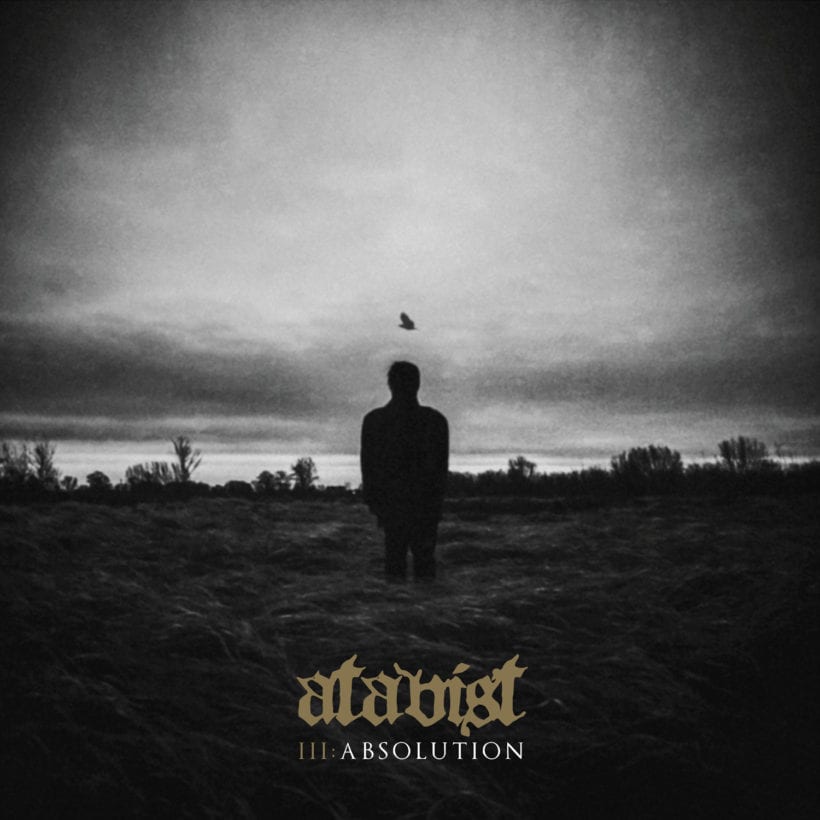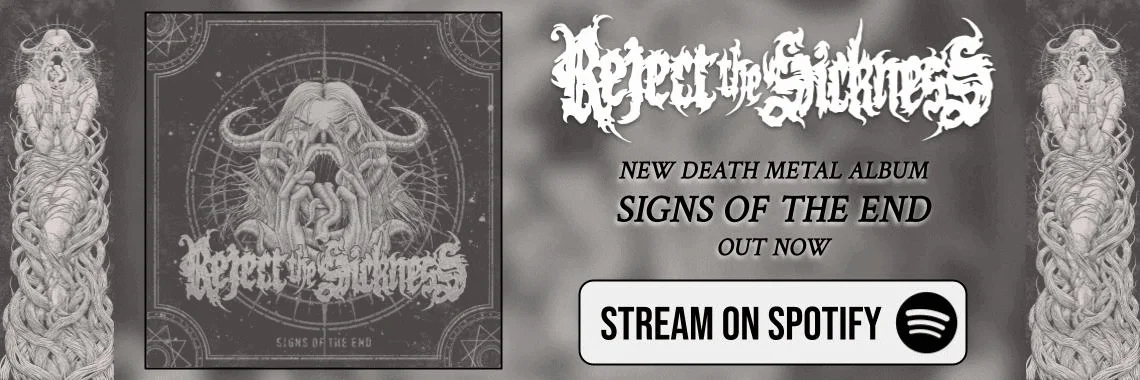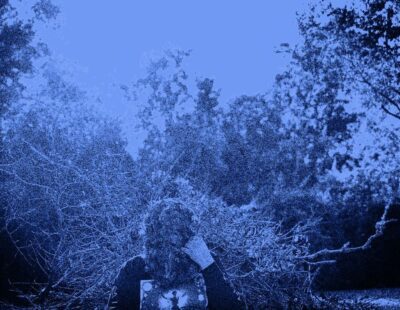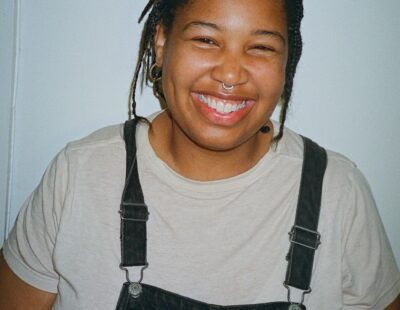
Formed in 2004, Manchester doom artisans Atavist began with a flurry of releases melding suffocating heaviness and mood-ruining atmosphere. Writing songs that routinely cross the fifteen-minute plateau, Atavist have always been a band that rewards focus and patience. Then silence settled after 2008. If the band left us with their sophomore LP (II: Ruined) as a swansong, the project would still be remembered fondly. Thankfully, the band felt there was unfinished business. After reforming almost a decade later, Atavist now present their third full-length, III: Absolution, set for release on June 19th from Candlelight Records/Spinefarm Records.
Continuing a theme from the album’s predecessor, Absolution focuses on the mourning process. It’s almost three minutes into opening track “Loss” before the first crash of distortion. Like most tragedies, it strikes without much warning. Just a flutter of drums from Callum Cox, a quick breath, then the heaviness implied by Atavist’s history. Later, the funereal bells of “Self-Realisation” drive the crawling rhythms in the album’s most pitch-black moments. While the minimalism of “Struggle” strips Atavist’s music down to the bare essence of Shane Ryan’s sludgy bass and Toby Bradshaw’s strangled screams, Absolution is by far their most textured release. Guest performers introduce subtle color to the album’s monochromatic mourning: Jo Quail (Cello, My Dying Bride) and Bianca Blezard (Viola/Violin, Winterfylleth) lend elegance to the hulking compositions. Winterfylleth keyboardist Mark Deeks also crafts memorable atmospherics throughout, especially in the album’s closing track, “Absolution.” The redemptive finale blossoms from the preceding harshness with lush keys and clean guitars. Guitarist Chris Naughton unveils his most emotive performance in “Absolution,” stabbing the sky with six-string wails and forlorn melodies. By the time the nearly 18 minute song concludes, it feels like someone’s soul has been musically scraped clean. This is doom from a heavy heart, written with time and care.
Stream Atavist’s III: Absolution and experience their evocative vision of catharsis through heaviness. Scroll further to read a thorough interview with Atavist bassist Shane Ryan about the band’s reformation and evolution. But first, press play and surrender to Absolution NOW.
Decibel Magazine interview with Atavist’s Shane Ryan
When Atavist formed in 2004, what was the initial intention of how the band would sound? What were your earliest influences?
Shane Ryan (bassist): Chris [Naughton, guitarist] and I were introduced through an independent record store that existed in Manchester at the time. The intention of the band was to create something heavy and slow that pushed the boundaries of extremity, as much as we knew how. In short: through jamming we soon began writing our first song and Atavist was born.
That first song was called “31:38” and came from an idea both simple and stupid: how long could we keep one song flowing forward without repetition. It was a mix of many different influences we all brought together. That said, there were some key albums that inspired us in the early days. Here are some from what I can recall: Flood by Boris; Grief’s Come to Grief; Llenandose De Gusanos by Corrupted; and Sunn O)))’s Flight of the Behemoth.
Atavist 2004 – 2008 was a product of its time. It was the manifestation of who we were as individuals then, of our circumstances and attitudes. It was our take on the doom genre of the time, something we look back on fondly but know that we are not the same as we were then. As we have evolved so has the music we need to create.
It has been over a decade since II: Ruined was released. What inspired the band to reunite and work on new material?
SR: There was a slow growing feeling that there was more Atavist music that remained unwritten. We had drifted apart as friends as well as musicians over the years and the beginnings of Absolution are deeply rooted in us reconnecting again after this period of distance. Whilst we all moved onto other projects musically—and have enjoyed these whilst not writing and performing together as Atavist—the call still remained in us. Ultimately that is what brought us back together to work on this album.
It had to be the right album though. We would rather have never done another album again than rushed out whatever riffs we could bundle together and slapping the logo on it.
From this internal drive to create more of this music and the spark of reconnected kinship, we began the long road of writing and recording the third album. Which has been happening over the past four years.
I love that you honor the band’s past but still push the songwriting into new territory. What did you want to adjust about the project’s sound after such a long hiatus?
SR: Absolution as an album was deliberate. We had a concept and could articulate how it should feel without having yet written a single song. This helped us shape everything we began to produce—it was a goal that kept us true. It led to songs and elements of songs being disregarded because they weren’t right for the journey we wanted to build.
We later titled the concept Absolution. This singular word described both a personal change within us as a group of individuals and the flow of songs we were developing.
With this title, we wanted to take the listener through the depths of human emotions, from mourning a loss, the struggle of comprehension and finally finding an ending to an arduous personal journey. Lyrically, II: Ruined was a rumination on the broken, the ruined. With III: Absolution we wanted to revisit this, but to explore the cycle or process as a whole, with a beginning and an end—even if this end becomes another beginning.
There is a healthy tension between Chris and myself when we create music. It was like no time had passed when we began again. We will challenge each other on the smallest details. Continually bounce ideas off of each other. Or just outright say “no” to a moment of ego that would dilute the concept we had. We accept that frustration is often the last step before you create something worthwhile.
The practicalities of song writing also changed. We used Chris’ home setup to demo and refine the songs, rather than previously when we’d jam out ideas in a practice room to see where they’d go. Most of II: Ruined was recorded live in the studio and we’d often nod to each other when it felt right to move to the next riff; rather than prescribing how many times through we’d be playing it. This was more controlled and deliberate.

The album was recorded with Chris Fielding at Skyhammer Studios. How long did you have in the studio, and did any of the songs reshape into new and unexpected forms?
SR: I can’t recall the exact number of days. Somewhere around 10. These were split out over a period of time due to the constraints of modern life. We then spent a couple of days mixing all the layers together into its final form.
Chris has a home setup for tracking ideas. For the past several years we’ve been writing, rewriting, experimenting, changing lengths, testing layers and drum pace, and going through repetitions of tweak-listen-adapt to make each song the best version of itself. We then took that into the studio as a guide. Like a sketch before the painting, if you will. The final flourishes, bursts of energy and emotion came on the days of the recordings. Our near finished pieces received their final nuances and depths that can only come from playing it loud and in the moment.
This made the recording session for the instruments more controlled. Previously it was all recorded live and then vocals and second guitar layered on top. This time it was the drums and string instruments that had more space. Especially the string movements. We provided the enabling constraints for the guest musicians to compose within and make it their own. The end result of that creative tension was rewarding.
I love the starkness of the album’s cover photography. What thematic guidance did you give the photographer?
SR: Vocalist Toby [Bradshaw] discovered the artist, Joanna Jankowska (www.artofinvi.com). There was a simplicity and tone to her photography and visual artistry that matched what we were conceptually looking for. Similar to how we worked with guest musicians, we provided the boundaries and let the artist explore that space and do what they do best.
In the end, each image features a faceless individual, possibly the dark, isolated depiction of somebody/nobody/yourself as the protagonist of the thematic arc of the album. Absolution is about the individual. Thus, each listener is the tantamount to the faceless individual depicted.
What are the band’s plans for the rest of 2020 and beyond?
SR: We have begun work on the concept for the fourth record. Don’t expect that anytime soon. It’ll be done when it’s done. For this record, we will see what comes following its release into the wild. What with one thing and another we have no concrete plans at the moment. We’ll see what comes our way.





